Jonathan Doyle is an outdoor enthusiast and film maker who documented the
Great Australian Triathlon, the world's first human-powered vertical crossing of Australia, undertaken by Ben Cianchi, his siblings and fellow outdoor athletes. This is his story.
I joined the
Camping Club Youth at the age of 12, attending my first meet at Cartmel Racecourse with South Lancs District Association. From that day on there was no turning back, the camping bug had bitten. I completed my
National Youth Test a few years later, which lead me to participating in several national youth meets as well as an international meet in Croatia.
Some 17 years later, I’m still putting the skills I learnt through the Club to good use and at the beginning of this year, I embarked on my biggest adventure to date: filming UK athlete Ben Cianchi’s ambitious attempt to become the first person to complete a human-powered vertical crossing of Australia from the most southern point of Tasmania to the most northern point of mainland Australia. Ben’s goal was to run 640 km along the length of Tasmania, Kayak 300 km across the Bass Strait and cycle 7000 km through mainland Australia.
The Run
The running team consisted of siblings Ben, Emma and Claire Cianchi, all of which were relatively new to the world of long-distance running. Couple this with the fact they were all dealing with various knee, ankle and shin injuries, we thought if any of the expedition legs would break us, it would be this one. As for me, I had decided to cycle with the team so I could carry all my camera and camping gear, while still being able to keep up with them. I had a similar level of experience with bike packing, in the sense that I had none. I really had no idea what I had let myself in for!
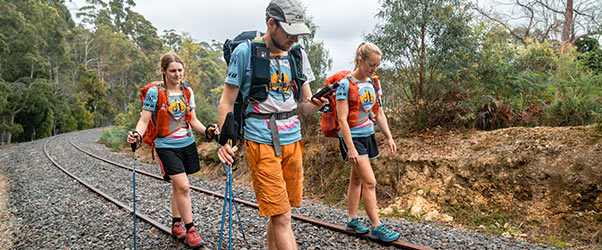
Our route predominantly followed the Tasmanian Trail, a multi-purpose trail established in 1988 to cross the entire state. It allowed us to stay off the roads and enjoy more of the Tasmanian wilderness.
One particularly challenging day that springs to mind was when I had to lift my 45kg bike up and over a dozen fallen trees, only to find out that I had taken a wrong turn, meaning I had to go back and do it all again!
Another such day was on the fifth day on the crossing, I met my nemesis, the 1000m White Timber Mountain which we had to pass directly over. The terrain was loose and steep, and I ended up pushing my bike uphill for several sweaty hours. Throughout the journey, I found that no matter how hard the riding was, or how brutal the hills were, the descent was always worth it, and I was always incredibly grateful to be out in the beautiful Tasmanian wilderness.
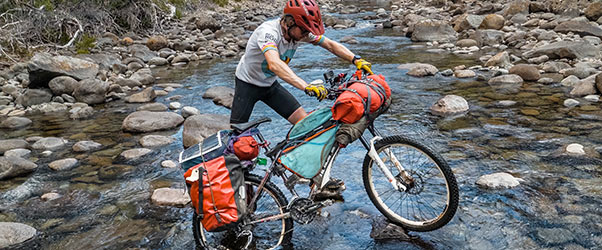
Ben, Claire and Emma reached the finish line, Little Musselrow Bay 20 gruelling days after they had begun. They covered on average around 30 km per day and they felt every single one of them. Their feet were a mess and their muscles were exhausted, and while the girls could return home happy in the completion of their mission, Ben still had two further legs of the expedition to complete.
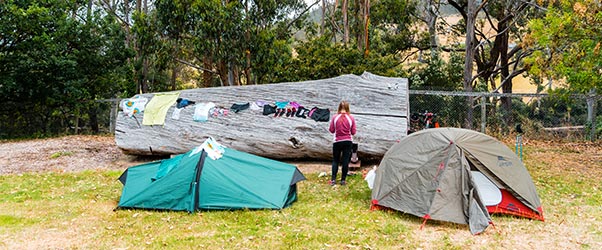 The Paddle
The Paddle
The second section of the expedition would see Ben, Aidan Cameron and Alie Repetto attempt to Kayak across the infamous Bass Strait. This notoriously dangerous body of water which can see up to 20m tall waves in adverse conditions! The team only had 21 days to complete the crossing, and since they could only paddle in fair weather conditions, it was anyone’s guess whether they would be able to complete it in time.
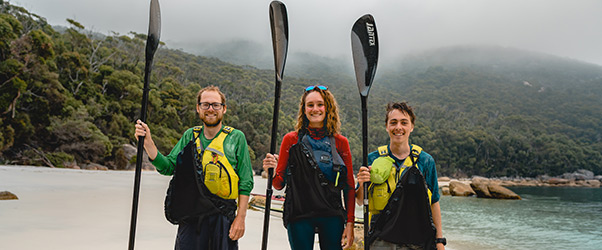
Filming this section was logistically difficult. I am not a kayaker, and as such could not, and would not join them in the ocean. I decided it would be best to meet the team on Flinders Island, the largest in the strait. I could literally see the bay in which the kayakers were waiting on Cape Barren Island, just 20 km south of my location, but due to the strong winds and rough seas, it would be three days before they could make the crossing. I spent the time exploring the Island, camping in Strzelecki National Park, climbing both Mt Strzelecki and Pillingers Peak and making friends with the local tiger snakes.
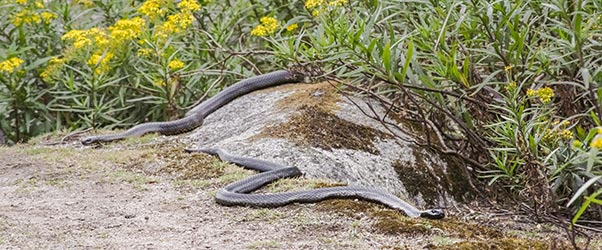
When it came to the filming, it was all or nothing. After 4 more days of waiting, we finally got a weather window and it was time to head north. I found myself huddled behind a rock on a headland, sheltering from the battering wind and sporadic rain and watching Ben’s GPS dot move painfully slowly towards my position. After 5 hours of waiting, my patience payed off as I spotted three sea kayaks in the distance, it was go time. I launched the drone and set my camera rolling and with no room for error, I spent an intense 15 minutes trying to capture as much footage as possible before they disappeared into the distance. That was the last time I saw the paddling trio for quite some time.
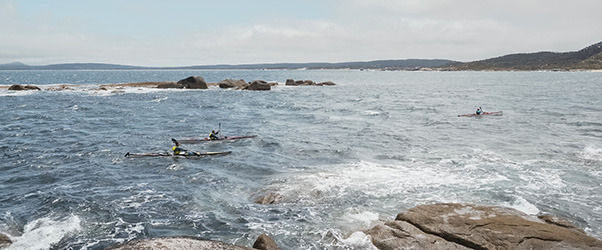
It took 19 days after Ben, Aidan and Alie to complete the Bass Strait crossing. Nine of which were spent paddling and the other 10 days were spent waiting for the weather, a sure test of mental fortitude.
The Cycle
Dan Lamb, the final member of the expedition and I met the kayakers at Wilsons Promontory, the most southern point of mainland Australia and the starting line for the final leg of the expedition. The plan was to follow the Bicentennial National trail, a multi-use recreational trekking route which stretches 5,330 kilometres, the longest of its kind in the world. However, this dream would be short lived.
After a season of catastrophic bush fires raging across Australia, we had been warned water supplies could be contaminated and campgrounds could be closed due to the risk of falling trees.
The team began this leg with high hopes and while I was stuck buying a car in Melbourne. Ben and Dan managed seven of the hardest days of cycling they had ever experienced on the BNT before we hit the first closures. This didn’t bother us unduly, we could skirt round them along some beautiful mountain passes, the roads would be fast, the filming would be easy, and we could hit the trail again soon. Wishful thinking. Over the following weeks, we were hit with closure after closure, and we realised that it wouldn’t be open again until we crossed the Queensland border, some 2500 km into the journey.
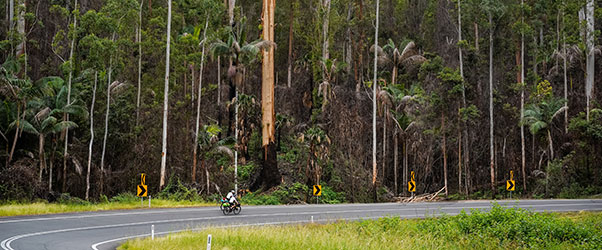
The situation was demoralising at times as we spent increasingly more time in towns and away from the wild landscapes we had originally envisaged. While the change of plan did make my job easier as filming from the car was fairly straight forward, I couldn’t help feeling something was missing. I was expecting to be regularly cycling with the guys and I was looking forward to that connection with the environment you just don’t get when travelling in the car. The situation was tough to accept at times, but it is the nature of ambitious expeditions, they don’t always go to plan, and sometimes they head in a completely different direction that first planned.
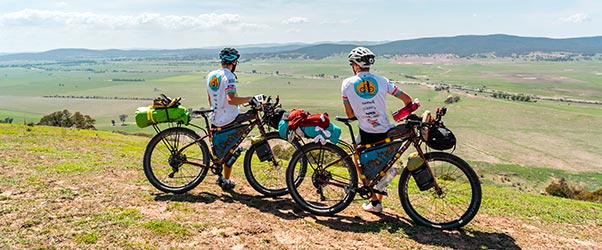
This is about the point I should be writing about the completion of the 7,000 km ride and thus Ben becoming the first person to complete a human powered vertical crossing Australia. However I am not. As we approached the Queensland border, spirits were high, we were about to head back inland and pick up the BNT again.
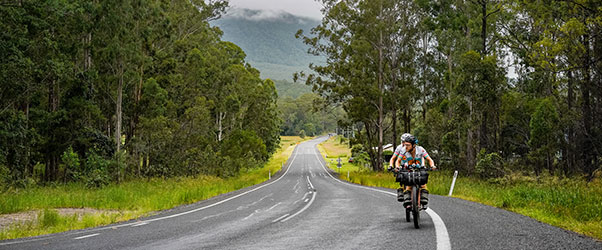
For a few days we had seen news articles about some new virus that had spread out from China, causing some difficulties in Europe. We didn’t pay much attention, we kept our heads buried in the sand telling ourselves that it wouldn’t really affect us as we’ll be out in the wilderness again in a few days. But then the entire of Cape York was closed meaning we suddenly did not have access to the final 1000 km of our route. “It’s okay, we’ll keep moving, we’re 2 months away from there yet, it’ll be open again before we arrive”. Then the state borders were closed, and the UK were advising travellers to get back home as quickly as possible. It got real. With heavy hearts we accepted that it was the end of the road. We booked flights and rode the final day into the fifth and final state of the journey and the finish line of The Great Australian Triathlon, some 3000 km premature. It was over.
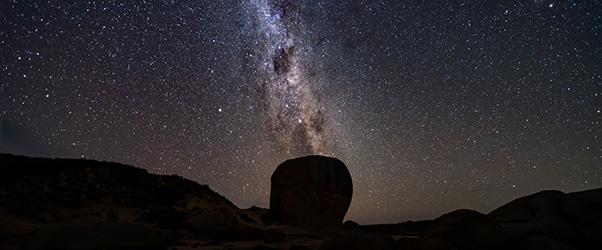
Two weeks of quarantine have passed since our swift exit from Australia, and the reality of the situation is finally beginning to sink in. Journeys are inherently full of risk and uncertainty, you can plan and prepare as much as you can, but in the end, you really have no idea what will actually happen. I think that’s why we are drawn to them, it’s the excitement of the unknown and the thrill of adventure that captures our imagination and pulls us out time and time again.
Okay so The Great Australian Triathlon didn’t win us a world-first title, but for me it was still a success. We got to delve deep into areas of the Australian wilderness we did not even know existed, we had to test our mental and physical resilience to overcome a multitude of challenges we faced, and we met so many interesting people who provided us with a completely different perspective on life in Australia. Adventure isn’t about titles and accolades, for me it’s about creating connections; with my team, with the environment and with the people we meet along the way. I feel we achieved this and so much more and I am truly grateful for the time spent with Ben and the team. Now who’s ready for the next adventure?
There is currently a documentary film about The Great Australian Triathlon in the making, but if you can’t wait for that, there are a
series of blogs and vlogs on our website and
Facebook page to check out.